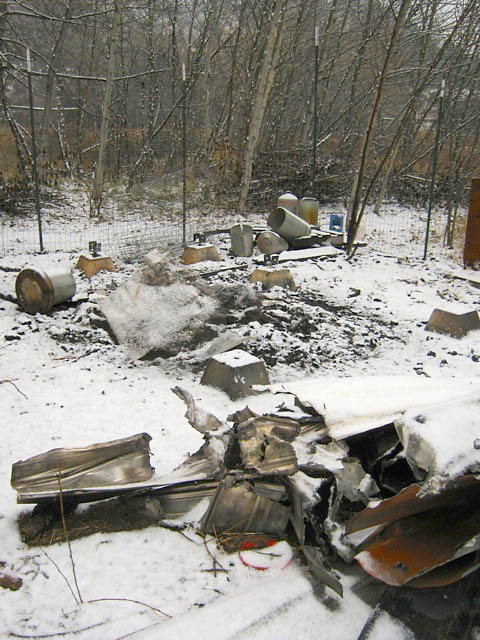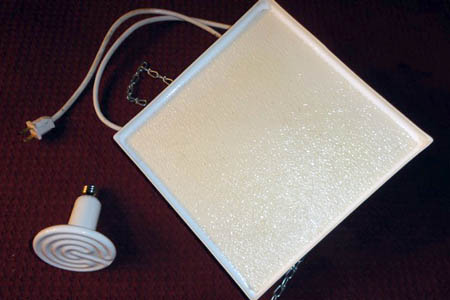home | internet service | web design | business directory | bulletin board | advertise | events calendar | contact | weather | cams

|
Keeping the Coop Dear Methow Chicken Keeper,  The aftermath of a chicken coop fire in the Methow Valley. The aftermath of a chicken coop fire in the Methow Valley.The Valley's latest coop fire hit Thanksgiving Day. Remarkably all six chickens that lived here survived and have found a foster home. That isn't always the case, nor is a coop fire always limited to the coop structure alone. In almost every fire a heat lamp is to blame. Firemen everywhere have been pretty busy since chicken keeping has become trendy. This doesn't have to be. The first thing to consider is whether you really need a heat source and when. If all you need is a light source for the 14-15 hours needed to keep your hens producing eggs through the winter months do not use a heat lamp, use a light. If you have selected hardy breeds with ample feathering and small combs you might not even need supplemental heat on a regular basis. However, if you keep a rooster with a significant comb, heat will often be needed over the rooster's comb. Roosters cannot tuck their comb under their wing like a hen. Big combs frostbite easily and they will either heal a bit shorter or if extremely frozen, gangrene can set in and the rooster may die. Consider the size of your coop, the size of your flock, whether they roost all smashed together or are able to roost high where it is a bit warmer. Small coops full of birds can produce significant heat (15 watts per bird) but they are too small for daytime use. Big coops are harder to heat, but they might be big enough for daytime use without the birds going stir-crazy if closed in on a very cold day. Birds need fresh air, the more the better, as they have fairly delicate respiratory systems and produce a ton of dust and moisture themselves. Unless extreme, cold is less harmful to their health than lack of ventilation. It takes some doing to provide good ventilation without drafts in the coop design but it can be done. So what happens when a flock goes stir-crazy? They peck each other, the dominant de-feather the submissive, they draw blood. It is ugly. Once bad behavior starts it is impossible to break. It spreads like wildfire through the flock and persists. I have tried to cull (the euphemism for killing an undesireable chicken) bad actors and ended up decimating almost an entire flock. Farming is not for sissies. Year round, birds need something to do everyday and space to do it in, again the more the better. Providing a winter roofed area for snow free space does the trick. Give them litter to scratch, loose dry dirt for bathing and a roost. If they can sunbathe part of the day they warm up and produce Vitamin D. They need it just like we do for physical and mental health. When you do need heat, use an alternative to a glass heat lamp and consider a few other safety precautions.
Both the ceramic bulbs and the Sweeter Heater work better than the heat lamp for chicks as well. Chicks do better if they have heat without light blasting in their faces 24/7. Wouldn't you? That's it for now, be safe. 12/8/2013 Comments Thank you, Jane, for again providing information that someone new here needs. I cannot imagine how terrible it would be to find the chicken house burning or the chickens frozen. Gloria Spiwak Winthrop
|
 A ceramic bulb (L) that fits in a standard socket, and a safe "Sweeter Heater".
A ceramic bulb (L) that fits in a standard socket, and a safe "Sweeter Heater".